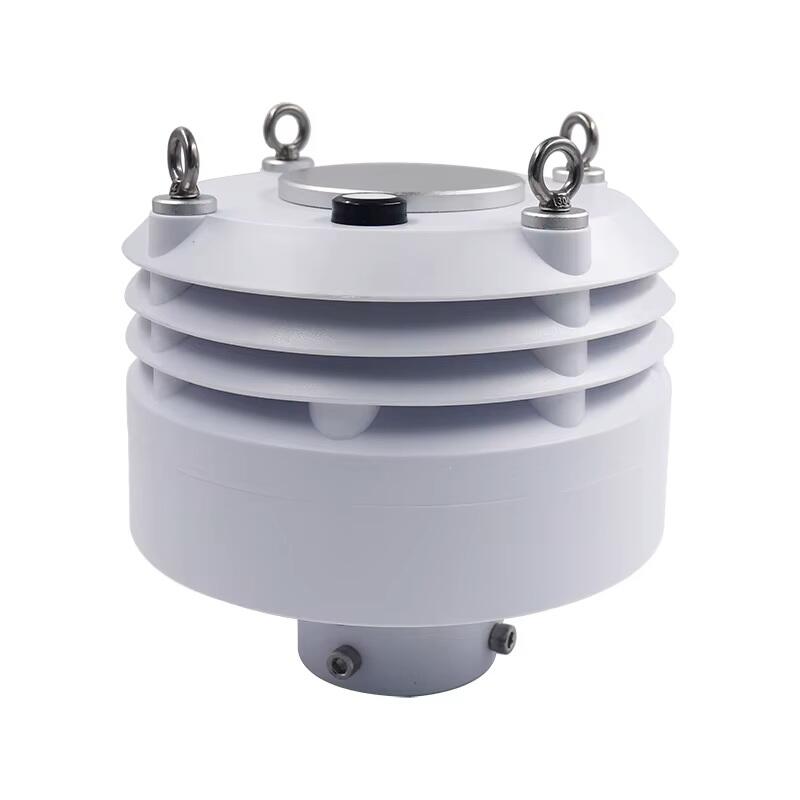Today’s environmental observation and accuracy farming continue to depend on cutting edge technologies of wind measurement in order to maximize the operations and efficiency. From numerous solutions that are at hand, the ultrasonic wind sensors have proved far much better than the conventional mechanical anemometers, which provide unprecedented levels of accuracy and reliability. These highly evolved sensors are changing industry assessment of wind patterns to deliver vital information for smart farming and methods of renewable energy.
Working Principle of Ultrasonic Wind Sensors
The Ultrasonic wind sensors are based on the time-of-flight measurement principle of ultrasonic sound waves transmitted to paired transducers. These devices usually have three, but still four ultrasonic transducers positioned with high geometric precision to measure three dimensional wind motion. When, however, wind passes through the transducers, it modifies the rate at which ultrasonic pulses propagate – speeding them up if they are travelling in the same direction of the wind, slowing them down if they are opposite directions. Advanced algorithms read these Teds so that the direction and the speed of the wind could be calculated with an extraordinary accuracy. Advanced models include temperature compensation for adjusting for the variations of sound’s velocity hence further improving measurement accuracy in different environmental conditions.
Comparison Between Ultrasonic and Mechanical Wind Sensors
The Measurement principle and physical building are the fundamental difference between ultrasonic and the traditional mechanical wind sensors. Mechanical anemometers use moving parts – cups or vanes that rotate physically to air movement. Although they have provided reasonably adequate measurement for the rudimentary measures required, they are fundamentally restricted by such factors as mechanical wear, friction errors, slow response rates. Unlike ultrasonic sensors, ultrasonic sensors do not contain any moving parts thus mechanical inertia is eliminated and instant response to changes in the wind is obtained. This static design also makes them virtually maintenance free and indifferent to the bearing wear or icing problems common to mechanical sensors in demanding environments. Comparative studies demonstrate that ultrasonic sensors are capable of retaining accuracy levels at ±1% for many years of continuous operation and mechanical sensors tend to degrade significantly faster.
Advantages of Ultrasonic Wind Sensors
The advantages of this ultrasonic wind measurement technology usage go far beyond its basic increases in accuracy. These sensors have several distinct advantages that make them best suited to demanding applications. Their solid state design guarantees unparalleled toughness and long while in service with selected manufacturers reporting decades of operational lifespan with minimal calibration adjustments. The lack of moving parts renders them immune to the wear and tear of mechanical means, and obviates an affliction familiar to mechanical sensors, the "stiction" in low wind conditions. Today’s ultrasonic sensors have on-board self-diagnostic functions and automatic heating mechanisms to prevent ice and snow build up in cold climes. A series of more advanced models can simultaneously determine several supplementary such as virtual temperature and sound velocity, giving more environment evaluation from a single small device. Together, these features produce a measurement solution which performs virtually maintenance-free field operation even in the harshest of conditions.
Applications of Ultrasonic Wind Sensors in Different Scenarios
Meteorological stations appreciate their ability to detect rapid winds and can be remembered by mechanical sensors. Covered applications are bridge and building wind load monitoring, and the rapid response of the sensor here threatens air conditions. Despite the flexibility of technology in various operating environment, the marine grade ultrasonic sensor is designed by some manufacturers for offshore applications.
Considerations When Purchasing an Ultrasonic Wind Sensor
It takes a critical consideration of various technical and operational aspects to arrive at selecting the right type of ultrasonic wind sensor. Range and accuracy requirements for a measurement device should correspond to the intended application requirements ranging from monitoring gentle breeze in agricultural fields or measuring hurricane force winds at coastal installations. Another important consideration is environmental durability and industrial-grade models present strong structures and security elements against outdoor severe environments. Some manufactures offer sensors where the output can be also configured in different ways, starting from basic analog signals to advanced digital protocols, that can be easily integrated into the data acquisition systems commonly used today. Energy and communications interface used should be compatible with those existing, while further features such as heating elements or lightning protection may be required for specific set-ups. Potential buyers should also pay attention to physical sizes of the sensor and installation options to create accurate installations at the monitoring location.

 EN
EN
 AR
AR
 BG
BG
 HR
HR
 FR
FR
 JA
JA
 KO
KO
 PT
PT
 RU
RU
 ES
ES
 ID
ID
 VI
VI
 TH
TH





